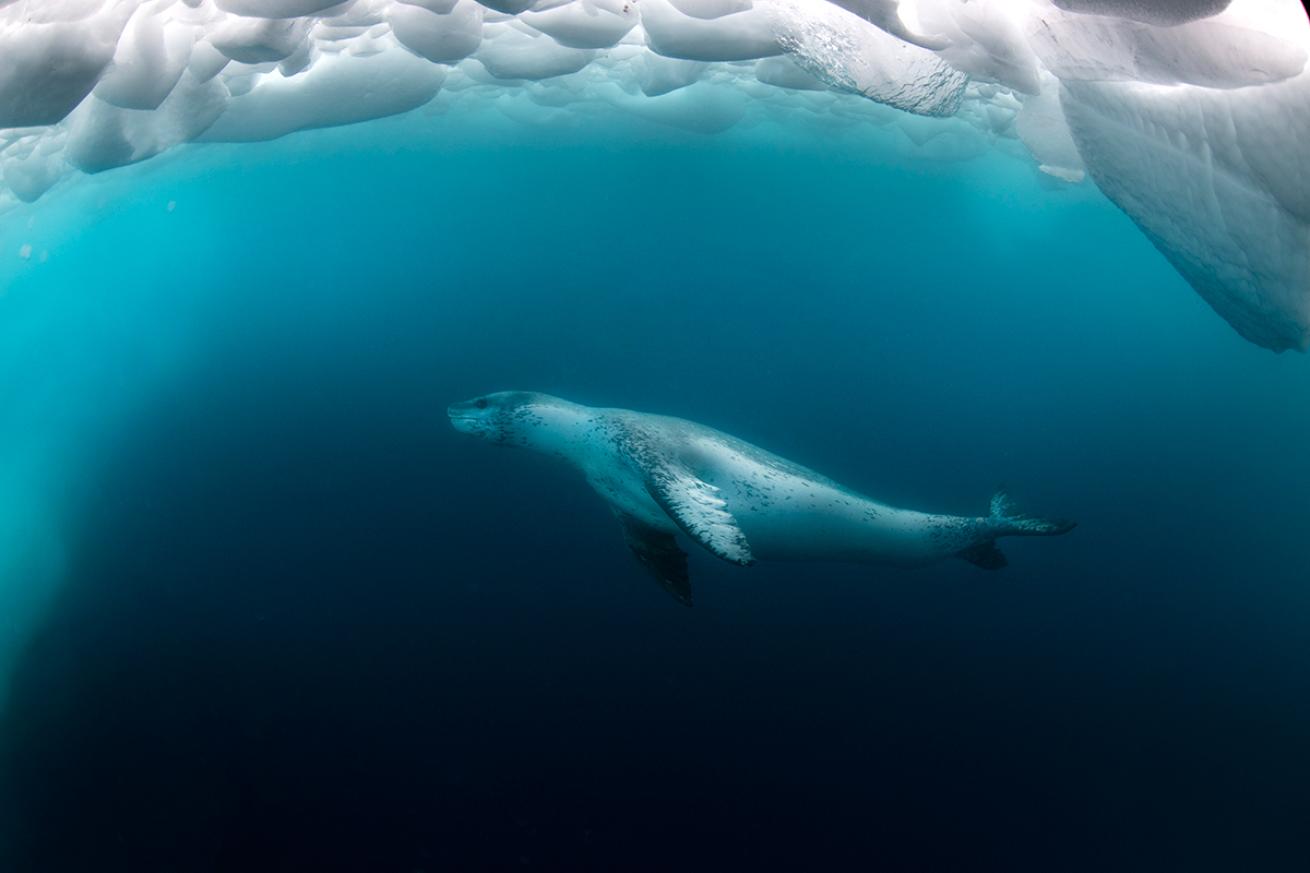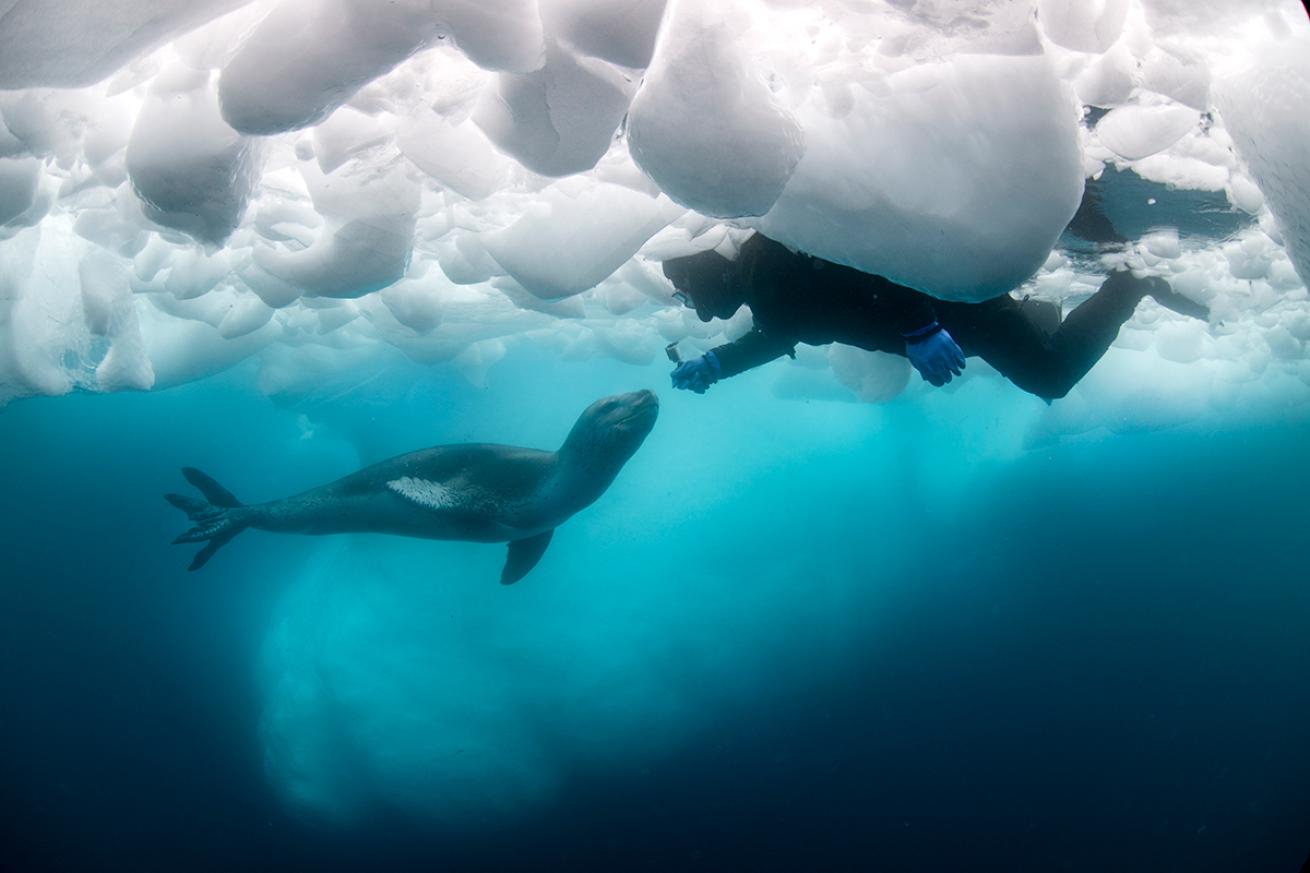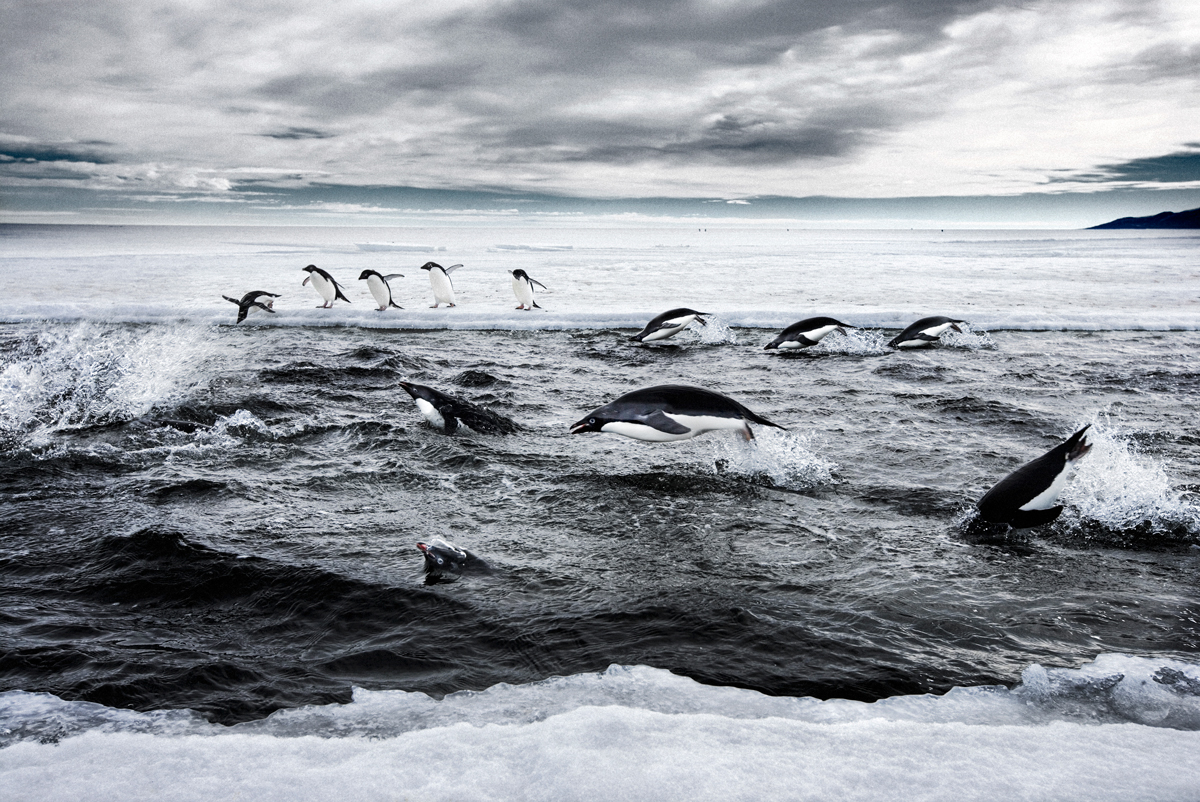Diving with Leopard Seals in Antarctica

Becky Kagan SchottA leopard seal soars beneath the Antarctic ice.
Antarctica was the pinnacle of my dreams. To me, nothing would be better than to spend time among millions of penguins, dive alongside icebergs and — with any luck — come across a leopard seal. One of the apex predators in Antarctica, not many people get the chance to be in the water with them. This, naturally, meant I had to see one up close.
Getting there didn’t happen overnight: After four trips to the Arctic, I finally felt ready to head south. After another two years of planning, I finally met up with my expedition vessel in Ushuaia Argentina. We departed late in the afternoon and spent the next two days braving the Drake Passage’s 30-foot seas to reach the Antarctic Peninsula.
I did every dive and seized every opportunity possible to snorkel during the six days, keeping my head on a swivel for any signs of a leopard seal. While snorkeling a rocky beach full of Gentoo Penguins half way through the trip, a dark shadow approached me.
“This is it!” I yelled internally, sticking my camera in the water to begin shooting frantically.
The large seal circled us a few times then darted off. Standing up in the chest-deep water, I triumphantly began flicking through my underwater images…only to find that it wasn’t a leopard seal — it was a crabeater seal! Exciting, but not my dream come true. By the end of the trip, the only leopard seals I saw were lounging on ice chunks.
I began planning my return the moment I got home. When I returned in February 2020, another two years had passed. This time, I entered the icy world with different expectations. I still hoped to see a leopard seal, but arrived knowing luck would have to be my friend. Nature is outside our dive plan.
The very first dive held promise. As we swam around the shallow site, we came across the grim site of four penguin carcasses.
“You need to look around — this was done by a leopard seal,” I thought. Still, none materialized out of the cool ether.
In the following days I had amazing experiences with fur seals, more crabeater seals and five species of penguins. But still no leopard seal.
On our last day of diving, I spoke with the divemaster while gearing up for an iceberg dive: “It’s okay if I don’t see a Leopard seal underwater,” I said. “I’ll be back to Antarctica again.”
About five minutes into the dive, I felt the icy grip of 29°F water leaking into my drysuit. This was bad. I probably hadn’t closed my zipper all the way. Unable to fix it underwater, I called the dive, returning to the zodiac dejected. Another chance to spot a seal gone.
But, as the other divers surfaced, we got the call I’d spent more than a decade preparing for: there was a leopard seal is in the water with the snorkelers on a nearby zodiac.
As we tore over to join them, I pulled my snorkel out. Immediately upon arrival, I splashed down into the icy water. (Yes, I actually had to push the ice out of the way to jump in!)
And there it was. As I pushed the bergy bits of ice out of my way, the conditions couldn’t have been better for this encounter. The water was clear and blue with no bottom in sight, encased all around by small icebergs and pack ice.
I made eye contact with the seal as it glided by me, slowly turning its head. My excitement was overwhelming. It came so close on its second pass I could see its whiskers and fur. Its big eyes looked right at me as if trying to figure out what I was. I expected the seal to do one or two passes then leave, so I was ready to maximize every second. Little did I know it would stay with our group for 90 minutes.

Becky Kagan SchottA diver and leopard seal inspect each other.
When it came straight to my dome port, I was elated! I’m sure the screams of joy coming from my snorkel were hysterical on the surface. The juvenile zipped around underneath us effortlessly. With sleek, gray bodies covered in spots a large head with big eyes, leopard seals almost look like serpents under the water. When they look at you, their toothy smiles appear sinister and their serpent-like movant is so streamlined as they glide underwater. The curious seal checked out every person several times. It gracefully swam below and would come up to the surface for a breath of air or to look around. I could not get enough.
When it finally left, I pushed my camera through the clunky pieces of ice on the surface, ice hitting my head, my lips frozen. After years of planning, thousands of dollars, and nearly two hours in a drysuit full of Antarctic water, I can say with confidence — meeting a leopard seal on its own terms was more than worth it.
Need to Know
When to Go
The best time to visit Antarctica is during the southern summer months of November to March.
Getting There
Antarctica’s logistics require some heavy lifting. Routes will depend on which continent from which your trip starts. I partner up with Blue Green Expeditions to help lead trips to Antarctica. We go through Ushuaia Argentina and board a 300-foot-long expedition Vessel through OceanWide Expeditions. It’s then a two-day journey across the Drake Passage, which can either be smooth or toss you on 30-foot seas. The vessels are built to handle these conditions.
Conditions
Topside temperatures are typically 25 to 35°F with weather that can be a mix of sun, clouds, fog, rain or snow. In the water, expect about 29 to 34°F depending on how far south you’re diving and how much ice is around you.
Equipment
Snorkeling in Antarctica is amazing with the proper drysuit, drygloves and thick hood. If you’re scuba diving, the tanks will have an H valve so you need two regulators and a BC or harness that can hold enough weight to submerge you in a single tank. A heated vest is nice if you’re going to be doing a lot of diving.
Related: What It Takes to Scuba Dive in Arctic Conditions











